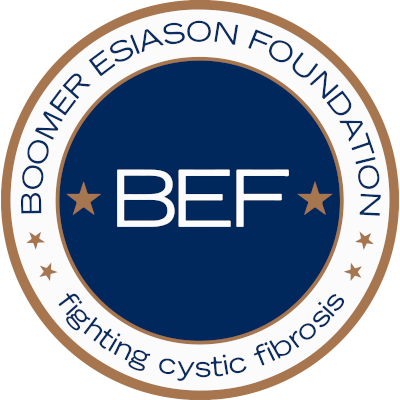The quality of life for children with cystic fibrosis has been improving over the years, in part through earlier diagnosis and clinical intervention.
Thanks to a $300,000 Collaboration Award from The Hartwell Foundation, researcher Sean Fain of the University of Wisconsin-Madison and Dr. Talissa Altes at the University of Virginia will explore 4-D imaging of the lungs in young children in connection with cystic fibrosis. The hope is that research will allow examination and treatment of children at younger ages than has been possible.
The project grew out of Fain’s research that was made possible in part by an earlier Hartwell Investigator Award. “That was for investigating childhood asthma with magnetic resonance imaging, doing what we call 4-D imaging, which is three-dimensional plus time,” says Fain, an associate professor of medical physics.
In that asthma study, Fain and his team worked closely with Dr. Robert Lemanske, who has been studying the childhood origins of asthma. Lemanske and his team have been following a group of children since birth.
“We had been investigating ventilation and trying to understand early onset of asthma and correlating ventilation defects with known risk factors,” Fain says.
Lemanske’s group, with its long history, allowed for the imaging results to be correlated with risk factors. “That provides a level of prediction about the likelihood to develop asthma clinically,” Fain says.
Through that work, Fain, whose research is done through the Wisconsin Institute for Medical Research, and his team created new tools for imaging of the lungs.
“We knew that kids under 6 typically couldn’t perform lung function tests, and I had been talking for some time with Talissa Altes at the University of Virginia about extending these tools to cystic fibrosis,” Fain says. “She had begun doing studies on cystic fibrosis herself and was interested in taking our tools to image dynamically ventilation in younger children during normal breathing, seeing if we could push back the ability to detect abnormalities in the lung to an earlier age so that we could guide therapies that are on the horizon.”
Through the years, cystic fibrosis has meant a lower quality of life and early death for many children. “The thought is, if we can intervene at an earlier stage, we may be able to prevent the bacterial colonization of the lungs entirely, or at least reduce it substantially and put it off further,” Fain says.
“My understanding in talking to my clinical collaborators, Drs. Phil Farrell and Scott Nagel, they don’t really start thinking about therapy until age 2, and even then they don’t often see symptoms to justify therapy,” he says. “Maybe there’s something going on in the lungs that our current metrics can’t pick up. This might allow us to notice that earlier.”
The 4-D imaging incorporates a contrast agent, hyperpolarized helium gas, that acts to light up the lungs. “One of the advantages is that we can now measure, in real time, the inhalation and exhalation of a gas,” he says. “That’s what has enabled us to extend the technique into young children. They can breathe passively and not have to perform any special type of maneuver.”
Fain says the process opens up opportunities to explore lung function that previously were not available. “The key thing here is that it’s a technique that’s safe. We’re not using any ionizing radiation,” he says. “That was a prime motivation for investigating asthma in children with this technique. We knew we wouldn’t be using x-rays that would add radiation risk in children.
“We’re breaking into a totally new area of understanding lung disease,” he says. “We couldn’t do this with any of the tools that exist today.”
Fain says his research would not have been possible without the support of The Hartwell Foundation.
“The thing about foundations like Hartwell is that they provide money to build projects that are higher risk, that really wouldn’t be mature enough to be funded by the conventional National Institutes of Health mechanisms,” he says. “They really serve a crucial role. Not to mention that now through the Collaboration Award, we are being allowed, in a way, to step even further into new areas because there really is very little known about imaging in young children and what their lung function will be like.
“It’s an awesome opportunity that they’ve provided,” Fain says. “I enjoy working with them because they bring together really innovative investigators from a broad array of fields. There’s also an entrepreneurial aspect in translating new ideas into practice and making these things really work in the clinic.”
Source: University of Wisconsin – Madison press release
